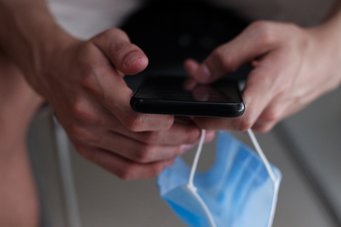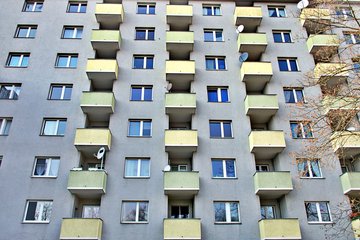Polarization and mobilization on social media affect infection figures
Model calculations reveal a link between political dissemination of information and Covid-19 infections in the USA
Measures to contain the Covid-19 pandemic are the subject of politically charged debate and tend to polarize segments of the population. Those who support the measures motivate their acquaintances to follow the rules, while those who oppose them call for resistance in social media. But how exactly do politicization and social mobilization affect the incidence of infection? Researchers at the Max Planck Institute for Human Development have examined this question using the USA as an example.

Limit crowds, keep a safe distance, and wear masks. Such non-pharmaceutical interventions, which should be implemented by everyone if possible in order to contain the incidence of infection, have played a central role since the beginning of the coronavirus pandemic. These measures have been disseminated via not only traditional media such as newspapers, radio, and television, but also via social media to a large extent. We can see that the appeals, recommendations, and regulations of governments are not only met with approval and understanding but also stimulate politically charged discussions, polarization, conspiracy narratives, and mobilization against the measures – often mixed with personal opinions.
But what does the rejection of Covid-19 measures depend on? And is there a connection between the politicization of Covid-19 topics in social networks and the development of the infection figures? Researchers at the Max Planck Institute for Human Development have investigated this using a mobilization model based on the example of Facebook in the USA.
A hypothetical campaign
First part of the study was a hypothetical political campaign in which the Democratic Party recommends non-pharmaceutical measures to combat the spread of the coronavirus. The results of the model calculations show that this campaign would have spread to Democratic states three times faster than to Republican states. No matter in which direction, the political polarization makes it difficult to reach most segments of the population equally. “Accordingly, the acceptance and further dissemination of measures depends on whether the sender and receiver are politically like-minded,” says Inho Hong, lead author of the study and a research grant holder in the Center for Humans and Machines at the Max Planck Institute for Human Development.
The researchers used a model to simulate the processes of social mobilization. The data for this came from two sources: The “Facebook Social Connectedness Index”, a measure for calculating social connections between people from different regions, and demographic information and data sets from election protocols of the New York Times. Based on this data, the researchers calculated how the Democratic campaign would have spread via Facebook and whether it would have led to political actions such as demonstrations.
Real infection rates
In the second part the researchers examined if there is any coupling of these mobilization processes and the spread of Covid-19 cases in the USA. They found that mobilizing Democratic supporters would have had a positive impact on fighting the pandemic because many people would have come together online and spread the regulations quickly and rather early. In contrast, the political charge and resulting actions on the Republican side would have would have exacerbated infection incidence in some regions. For example, infection rates spiked starting in mid-April 2020 after Republicans demonstrated against the first lockdown and did not consistently comply with the specified hygiene rules. This means that political regulations such as lockdowns can have the opposite effect after they are reinterpreted by politically polarized opponents – and even exacerbate the situation.
“The model has allowed us to show a link between the social divide in the USA, the spread of information via Facebook, and the evolution of the incidence of infection,” says Alex Rutherford, senior research scientist and principal investigator with the Center for Humans and Machines at the Max Planck Institute for Human Development and co-author of the study.
Political consequences
The study results suggest that a political charging of the measures to combat the pandemic can have a counterproductive effect and even fuel the incidence of infection. “On social media, the mask was quickly re-interpreted as a political statement and used to polarize the population. Governments should therefore consider to whom and through which channels they disseminate information and whether they want to target mobilization,” says Manuel Cebrian, Leader of the Digital Mobilization Research Group at the Center for Humans and Machines at the Max Planck Institute for Human Development and co-author of the study.
The focus of the study was on political attitudes of US citizens. Other possibly decisive social factors such as occupation, income, gender, and origin would have to be investigated in further studies. These could provide information for planning the communication of future measures – for example, government vaccination strategies.












